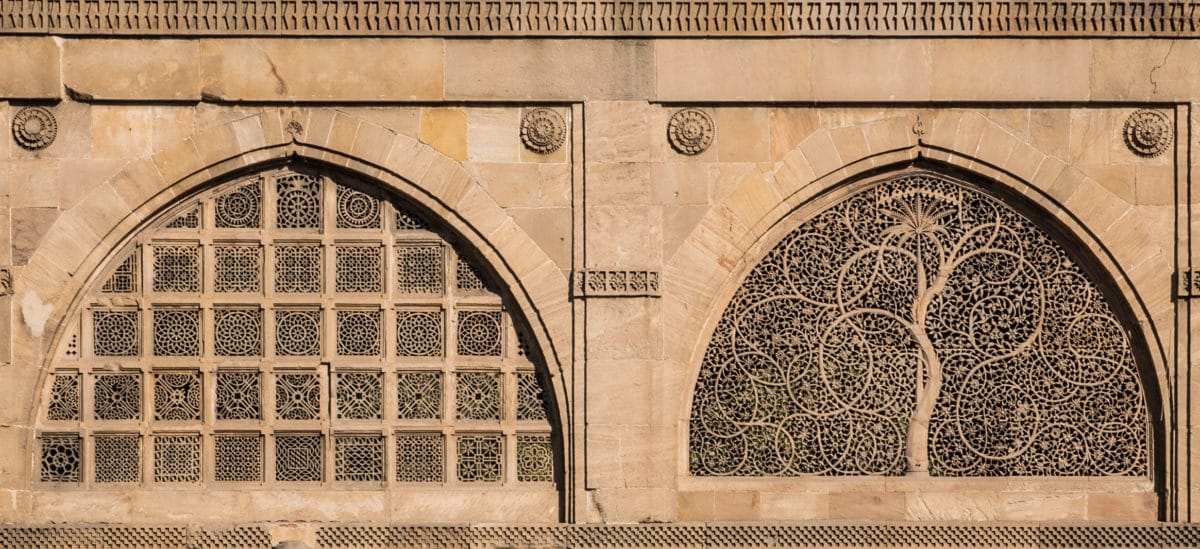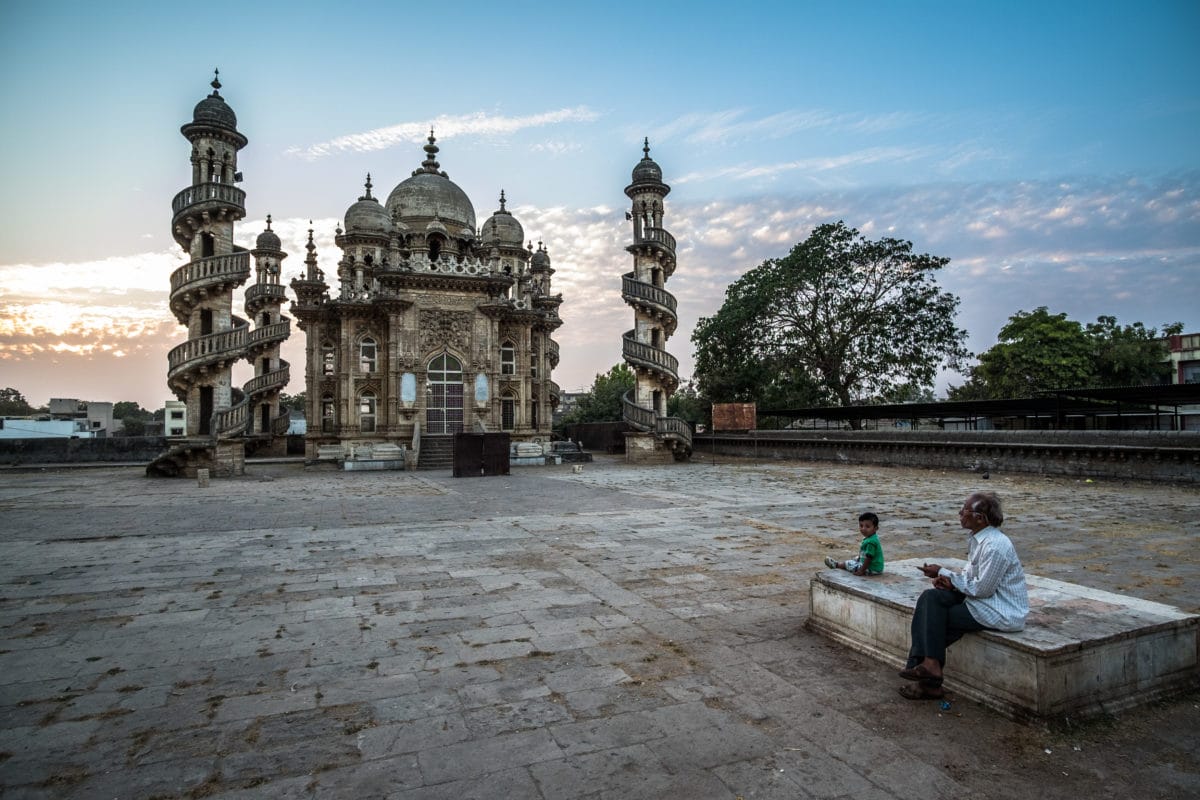Gujarat, a state rooted in Hindu and Jain mythology and religious history, is home to some of the early forms of Islamic Architecture in India. Like other regions in India, it completely transcends the modern concept of a ‘state,’ reinforcing, once again, that this country is an amazing confluence of cultures and religions. Several buildings across the state, dating back to the 13th Century, are an interesting and curious mix of these styles and art forms.
Located a few kilometres outside Ahmedabad’s centre, the Sarkhej Roza (pictured above) is a serene and peaceful place. The complex houses the tomb of Shaikh Ahmed Khattu Ganj Bakhsh, a sufi saint and advisor to the family of Ahmed Shah, the founder of Ahmedabad. The complex is also home to a large airy mosque, a library and cultural center, as well as several ruins of palaces built over time by the descendants of Ahmed Shah. But the mosque, built in 1445 is the highlight of the entire complex, with its intricate lattice work, Persian style floor plan and design, with motifs and carvings that speak of Hindu and Jain influences. The tomb and other structures in Sarkhej is a unique blend of Islamic, Hindu and Jain influences of art and design, which later came to be known as the Indo-Saracenic form of architecture. This form of architecture and design can be seen in several other monuments across the state.
Another stunning structure, built around the same time is the Jama Masjid (pictured above) in Ahmedabad’s old city. While the old city is bursting with people, animals, shops and all manners of conveyances, the mosque is a wonderful respite and escape. The large open mosque was built in 1424 during the rule of Ahmed Shah I, and is an important place in the history of Ahmedabad. But what makes the mosque most interesting and important is its architecture and design, which merges Islamic and Hindu styles in perfect rhythm. While the high ceilings can easily be mistaken for those in a temple, the carvings around the pillars and arches are unmistakably Islamic. They blend together perfectly.

A short walk away and one comes across the Sidi Saiyyed Mosque, a very interesting rectangular structure, set in the middle of a busy intersection in the old city. Built in the 16th Century at the fag end of the Sultanate, just before Gujarat fell to the marauding Mughals under Akbar, this small mosque boasts a number of intricate stone latticework windows, which rival anything we have seen in Gujarat or for that matter elsewhere in India. The one window (pictured above) depicting the ‘Tree of Life’ served as the inspiration for the iconic IIM Ahmedabad logo and over time has come to be known as the unofficial symbol of Ahmedabad, as well as influencing art till today in India.

In the far south of the state lies the dusty, extremely important city of Junagadh. It is here that people come to from all over the world, to climb over 10,000 steps on Girnar hill to the Jain temple that sits high above the city. It is one of the most holy of places for worshippers of the Jain faith. Dusty Junagadh is also home to the Mahabad Maqbara, the tomb of Nawab Mahabad Khan II and his vizier next door (pictured above). A descendant of the Nawabs who belonged to the Pashtun tribe of Afghanistan, the mausoleum is a unique amalgamation of Indo-European art and architecture. With high french style lattice windows, storybook minarets that are ornately carved, gothic columns and arabic calligraphy, it is truly one of the most beautiful tombs we have seen thus far.
Just outside of Baroda, the ancient city of Champaner was founded in the 8th century AD by the Hindu Chavda Dynasty and later occupied by the Chauhan Rajputs until the late 15th Century when it was captured by the then Sultan of Gujarat, Mahmud Begad. Now a World Heritage site, the architecture of Champaner and the hill fort of Pavagadh that overlooks it, reflects its transition from Hindu to Islamic architecture styles and in UNESCO’s words is of “Joint significance as a living Hindu pilgrimage center, its cluster of Jain temples, its remarkable preserved medieval urban fabric, its exquisite sandstone-carved mosques and tombs and its intangible heritage values.”
It is these important monuments and heritage buildings that truly demonstrate that art, skill and design can transcend all manners of faith to create lasting works of beauty.
Reporter, Try some bracketing or longer exposure on some of these old monument shots. You will get richer colors. Nice shots tho.
Most monuments don’t allow tripods so long exposures not possible, especially in midday 🙂 Will try bracketing though. Thanks.